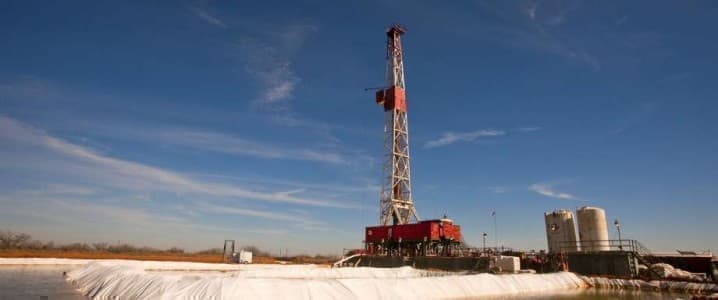At the start of this week, following Iran's missile attack on Israel, oil prices inched up. The key word here was "inched". The attack was a first; it came from the fourth-largest oil producer in OPEC, and it targeted a country notorious for its military prowess. Yet prices only inched up rather than soaring.
One could argue this was because the situation was apparently defused quickly, with neither of the sides willing to engage in an escalation, but this may only be part of the reason for oil prices' lukewarm reaction. The other reason is U.S. shale supply—and that supply may be about to become tighter.
The Energy Information Administration reported this week that the number of drilled but uncompleted wells, the so-called DUCs, had gone up for the first time in a year in March. The increase wasn't stunning or anything, at just nine new drilled but unfracked wells, for a total count of 4,522. But it did suggest drillers are not putting everything they have into production growth—despite WTI prices moving closer to $90 per barrel lately.
This is not exactly unexpected, at least in light of earlier forecasts by the EIA about U.S. oil output trends for the year. The authority said earlier this year that it expected a much more modest pace of growth this year compared to last. It's not the only one predicting a slowdown, either.
Oilfield service veteran David Messler suggested last month that oil production in the shale patch may be nearing its peak and consequent plateau. Messler cited accelerated decline rates for shale wells and the flurry of acquisition deals in the oil space as companies rushed to secure inventory. Related: High Interest Rates Could Slow Down the Energy Transition
Now, the peak that Messler—and others—predict won't materialize this year. But the latest fracklog figures support the EIA's prediction that growth will slow. This will have an immediate and direct bearing on oil prices, just like the output drop in January, due to winter weather, had a bearing on prices, helping them higher.
For now, all looks good, with the EIA forecasting a 16,000-bpd increase in oil production from the shale patch in May. This would bring the total output of the shale plays to 9.86 million barrels daily, with the Permian contributing 11,500 bpd of the overall output increase for the month. So far so good. But earlier this month, Reuters cited industry executives as saying there was little incentive for strong production growth—because of gas prices and also because of higher costs.
All forecasts talking about a continued boom in the shale patch cite things like demand and production process efficiency gains but only the better ones among them acknowledge factors such as costs and could very well be called the new black for U.S. shale: shareholder returns.
These are important factors that need to be mentioned because they drive production planning decisions at least as much as demand expectations, if not more, when you add increasingly stringent, meaning expensive, climate-related regulations. "We need gas prices to get to $2.50 for an overall increase in activity. The Permian customers that have associated gas are seeing awful differentials," one oilfield services CEO told Reuters last week. And it's not just gas prices that are holding drillers back. It's all those additional costs they are facing, from things like methane emission reporting.
Enverus has confirmed an apparent unwillingness in the industry to expand production strongly. "Rig activity levels continue to plateau suggesting that these price levels have not generated an activity response," analyst Alex Ljubojevic said.
Enverus predicts U.S. crude oil output growth at 230,000 bpd this year. The EIA sees it at 260,000 bpd. Both figures are a fraction—although a large one—of the 1-million-bpd output growth in 2023. This brings us back to the situation in the Middle East and oil prices.
At the moment, whatever happens in the Middle East—short of a direct strike on an Iranian oilfield, for instance—has a muted effect on prices. That's in large part because traders are confident about the sufficiency or near sufficiency of global supply—thanks to U.S. shale oil. But shale oil output growth is slowing. And this means the perceived sufficiency of global oil supply is about to change later in the year. Prices will follow.
ADVERTISEMENT
In a recent opinion piece for the Financial Times, Engine AI adviser and former Citigroup chief equity strategist David Buckland said geopolitical events these days are having a much weaker effect on international prices because of U.S. shale. He is right, which means that when the illusion of unending U.S. shale oil supply shatters, the fallout will be significant. And it seems that this fallout may come sooner than many expect. It might turn out to be quite a nasty surprise.
By Irina Slav for Oilprice.com
More Top Reads From Oilprice.com:
- Should We Keep Investing in Oil and Gas? Experts Weigh In
- Oil Moves Down on Crude Inventory Build
- Red Sea Could be Where Israel Strikes Next

















